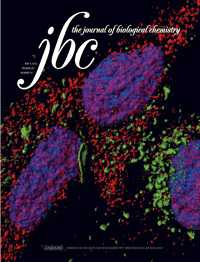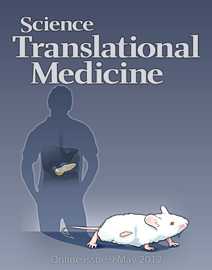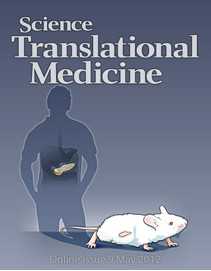Cell Res:刘默芳等揭示Onconase抗恶性间皮瘤机制
2012-05-24 中科院生化细胞所 中科院生化细胞所
4月24日,国际学术期刊Cell Research于在线发表了上海生科院生化与细胞所刘默芳组关于Onconase抑制恶性间皮瘤细胞microRNA(miRNA)表达的最新研究成果。该工作与上海南方模式生物研究中心王庆诚教授合作完成。 Onconase是从北方豹蛙卵或胚胎中提取的一种核糖核酸酶,是RNase A超家族中最小的成员,目前已被欧盟、澳大利亚和美国FDA批准作为罕见病药物(Orphan
4月24日,国际学术期刊Cell Research于在线发表了上海生科院生化与细胞所刘默芳组关于Onconase抑制恶性间皮瘤细胞microRNA(miRNA)表达的最新研究成果。该工作与上海南方模式生物研究中心王庆诚教授合作完成。
Onconase是从北方豹蛙卵或胚胎中提取的一种核糖核酸酶,是RNase A超家族中最小的成员,目前已被欧盟、澳大利亚和美国FDA批准作为罕见病药物(Orphan drug)用于恶性间皮瘤临床治疗使用。因接触石棉是其主要诱因,恶性间皮瘤也俗称为石棉癌,该恶性肿瘤预后极差,至今尚无有效的治疗措施。Onconase特异性地诱导癌细胞凋亡,而对正常细胞的毒性较低,对非小细胞肺癌、乳腺癌等的临床试验目前也正在进行中。然而,作为一种很有前景的抗肿瘤药物,Onconase的细胞毒性机理尚不完全清楚。
刘默芳研究组研究生乔萌和祖立东等发现,Onconase对恶性间皮瘤细胞的miRNA表达具有普遍下调作用,而对细胞中一些oncomiR(如miR-155和miR-21)的下游靶基因如socs1、pten、pdcd4等肿瘤抑制基因有明显上调作用。有趣的是,该工作发现Onconase降解miRNA 前体,而对miRNA成熟链无明显作用;与之一致的是,Onconase抑制Dicer对miRNA前体的加工、降低Dicer生产成熟miRNA。进一步的研究发现,Onconase对miRNA前体的切割位点偏好于U-G和U-U。鉴于miRNA在肿瘤发生发展中的重要作用,该工作揭示了Onconase抗癌活性的一种新机制,完善了Onconase的抗癌作用机理,为Onconase的更加合理、有效、安全用药提供了科学依据。
该项研究工作得到了国家科技部、国家基金委、中国科学院及上海市科委的资助。(生物谷Bioon.com)

doi:10.1038/cr.2012.67
PMC:
PMID:
Onconase downregulates microRNA expression through targeting microRNA precursors
Meng Qiao1,2,3,*, Li-Dong Zu1,2,3,*, Xiao-Hong He1,2,3, Ru-Ling Shen4, Qing-Cheng Wang4 and Mo-Fang Liu
Onconase, the smallest member of RNase A super family that was isolated from oocytes or early embryos of the Northern Leopard Frog (Rana pipiens), has been granted as an orphan drug for the treatment of malignant mesothelioma by US FDA1,2. It was also tested in clinical trials for patients with non-small-cell lung cancer, breast cancer, and renal cell cancer2. Onconase is extremely stable with a Tm of ~87 °C, resists degradation by various proteases, and evades ribonulease inhibitors (RI) present in mammalian cell cytosol3,4,5, which confers advantages to its application in cancer treatment. More importantly, onconase specifically induces apoptosis of cancer cells but has low cytotoxicity to their normal counterparts2. One rational hypothesis for this selectivity is that onconase, a highly cationic protein with calculated pI > 9.5, is selectively internalized by tumor cells given that tumor cells generally are more negatively charged than cognate normal cells2. Nevertheless, as an anti-cancer drug, the mechanisms of its antitumor activity are not well understood. The current model of onconase-mediated cytotoxicity favors that onconase degrades tRNAs in tumor cells after its cytosolic internalization, which leads to ubiquitous inhibition of protein synthesis and apoptosis2. However, increasing evidence indicates that degradation of tRNAs and inhibition of protein synthesis are not the sole cause of onconase-induced apoptosis6,7,8. Consistent with the well-documented causal roles of microRNAs (miRNAs) in cancers, a recent study indicates that onconase regulates the expression of miRNAs in malignant pleural mesothelioma cell lines (H2959, H2373, and H2591), and reveals that onconase controls cell proliferation, invasion, migration, and apoptosis through modulating miRNAs9. However, how onconase affects miRNA expression remains unclear. Here our biochemical studies showed that miRNAs are the direct downstream RNA species of onconase. Intriguingly, we found that onconase downregulates miRNAs by cleavage of miRNA precursors, thus reducing the amount of mature miRNAs produced from Dicer processing.
本网站所有内容来源注明为“梅斯医学”或“MedSci原创”的文字、图片和音视频资料,版权均属于梅斯医学所有。非经授权,任何媒体、网站或个人不得转载,授权转载时须注明来源为“梅斯医学”。其它来源的文章系转载文章,或“梅斯号”自媒体发布的文章,仅系出于传递更多信息之目的,本站仅负责审核内容合规,其内容不代表本站立场,本站不负责内容的准确性和版权。如果存在侵权、或不希望被转载的媒体或个人可与我们联系,我们将立即进行删除处理。
在此留言














#CEL#
46
#ConA#
46
#恶性间皮瘤#
52
#Cell#
68
#间皮瘤#
67